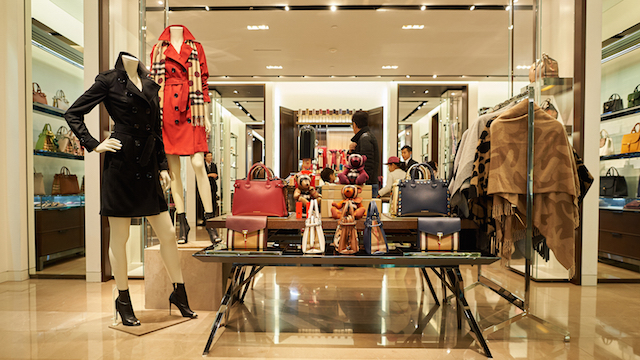Burberry Asia has bounced back with a surprise reversal of fortune evident from its latest quarter.
But its Hong Kong and Macau stores continue to suffer from the broader decline in premium retail spending.
The UK-headquartered luxury fashion retailer says its Asia Pacific sales grew 9 per cent year-on-year in the second quarter, as Burberry’s largest market in the region – Mainland China – recorded mid-single digit like-for-like growth, amidst ongoing store rationalisation in the region.
The company said for the six months to September 30, Hong Kong continued to experience negative footfall, and comparable sales were down by a double-digit percentage. “Excluding Hong Kong and Macau, comparable sales in the region were positive in the half.”
Globally, the luxury brand’s story remains broadly the same, however, with wholesale and licensing continuing to drag down total revenue growth, reporting declines of 6 per cent and 51 per cent respectively.
Nivindya Sharma, a senior analyst with Verdict Retail, says the is partly due to Burberry re-evaluating its licensing partnerships and the presence of its brand in various wholesale markets, but also due to weak demand in key markets such as the Americas.
Burberry’s retail revenue was boosted by a 30 per cent uplift in second quarter UK like-for-like sales as luxury shoppers rushed to take advantage of the weaker pound helping the EMEIA region to grow 10 per cent.
“However, the Americas remain a particular bugbear for the luxury player, as the continuing struggle of department stores in the region and the resultant tighter inventory controls hurt Burberry’s wholesale revenue, while political uncertainty dampens domestic customer demand affecting Retail revenue,” observes Sharma.
“The environment for luxury brands will remain challenging over the remainder of 2016 and into 2017, but Burberry has many aces up its sleeve especially in terms of product innovation and customer experience. With Verdict data indicating 85.6 per cent of clothing shoppers prefer to buy clothing they can wear straight away, Burberry’s decision to introduce a see-now buy-now collection in September 2016, making it one of the first retailers to do so, cements its position as a visionary luxury brand.”
Digital has always been a strong suit of Burberry and the recent revamp of burberry.com to make it more customer-responsive, while introducing new initiatives such as store stock look up, will improve conversion levels and customer satisfaction, she says.
“New CEO Marco Gobetti is due to take the reins imminently, and will bring a fresh structure and direction to the brand, while freeing up creative director Christopher Bailey to do what he does best – innovate and create – keeping Burberry in prime position to weather the storms ahead.”
Bailey was upbeat about the overall result: “In a challenging external environment, we continue to focus on product innovation, retail productivity and digital leadership, against a backdrop of sustained action and investment to deliver long-term outperformance of our brand and business. The progress we are making to improve our ways of working, the agility of our teams to react to changes in consumer behaviour and the strength of our brand give us confidence for the future. We remain on track to deliver our financial goals.”






